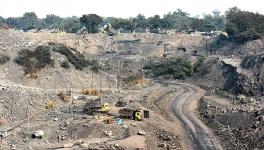Bihar Govt’s Love for ‘Fly Ash’ Chokes Village and Environment
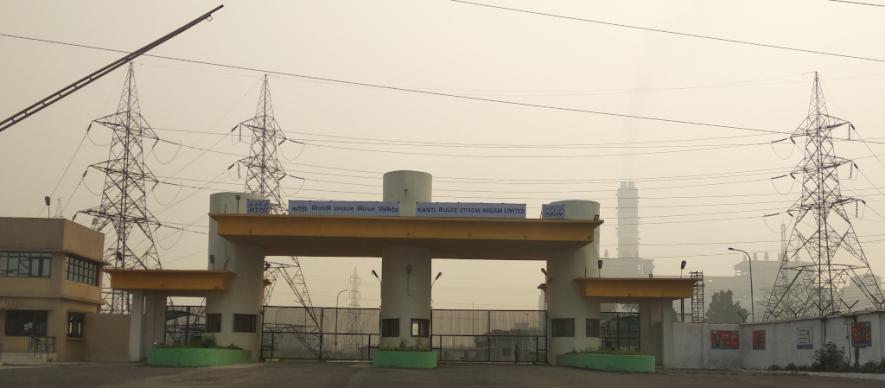
Kanti Bijlee Utpadan Nigam Limited. | Photos Credit: Saurav Kumar
Kothiyan village under Kanti block in Muzaffarpur, 108 km East from Bihar’s capital, Patna, used to be the place of fortune in the 80s when a government-run industrial initiative made inroads, raising hopes and aspiration for local residents. But decades later, the villagers continue to lead a life of despair in the most choking atmosphere, living under the blanket of “fly ash”.
Kothiyan is situated opposite Kanti Bijlee Utpadan Nigam Limited, a thermal power plant, while National Highway-28 passes between the two. Roughly a population of 5,000, with most of most of them engaged in agriculture, and in loading and unloading of ‘fly ash’, which constitute the main occupations of the habitat.
In 1985, a coal-based thermal power station came up in Kanti under the state government. It came into existence after major efforts of the then Member of Parliament (MP), late George Fernandes. The construction of the plant began during Fernandes’ first tenure as MP from Muzaffarpur in 1978. In 2014, the Kanti plant was renamed as George Fernandes Thermal Power Plant to acknowledge his contribution.
In 2018, the Bihar government handed over its three thermal power plants -- Barauni Thermal Power Station, Kanti Bijli Utpadan Nigam Limited and Nabinagar Power Generation Company Limited -- to public sector giant National Thermal Power Corporation (NTPC).
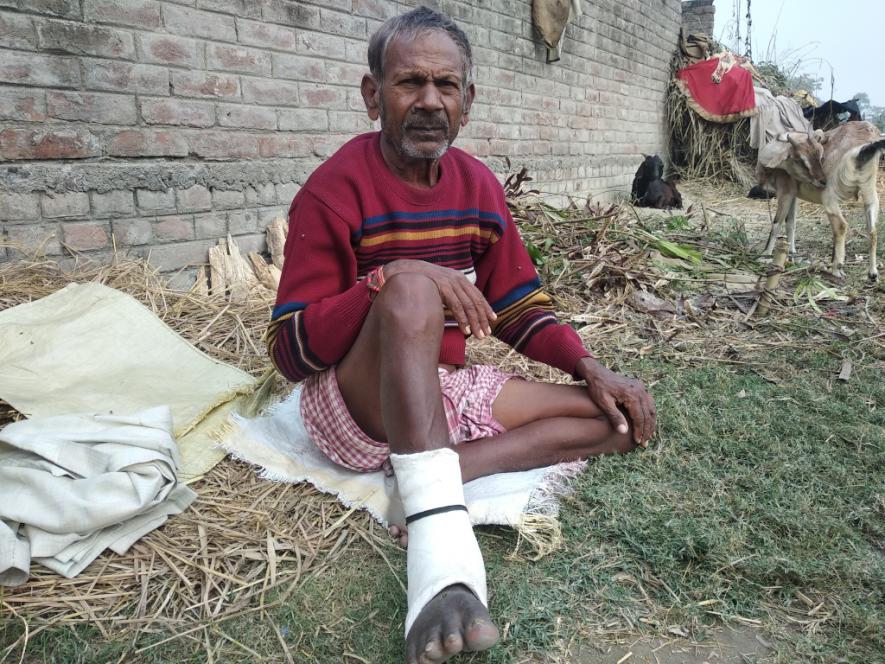
Ram Vilas Baitha, a victim of fly ash exposure
Fly ash is the toxic waste product generated in thermal power plants after the burning of coal. It is stored in huge ponds, at times in volumes exceeding millions of gallons, in the form of slurry.
So, what has been the impact of fly ash on the health of the people and ecology of the area.
“We consume fly ash daily and imagining life without it is impossible. I was engaged in loading it on tractors in the dusty dumping ground near our village and four months back, I was detected with severe skin disease that disabled my movement,” said Ram Vilas Baitha (60), resident of Kothiyan village. He said his right leg had lesions filled with pus and pain curbing his mobility.
“My son Arjun (32) also does the same risky job to earn livelihood but there’s no check from either government authorities or plant management,” Baitha added.
After the skin ailment, the daily earnings of Baitha have taken a big hit.
Many in the village are suffering from breathing problems and few have also complained about bronchitis. Ijaz Ali (40), a tailor by profession, confessed to have breathing problems, blaming toxic air inhalation, as he had no way to avert his surroundings.
Harihar Paswan (55), a farmer accused the nagar panchayat officials for “bluffing” the villagers when land acquisition was underway for setting up the thermal plant.
“We were promised jobs and enhancement of livelihood. At the end everything was mere bluff,” he said.
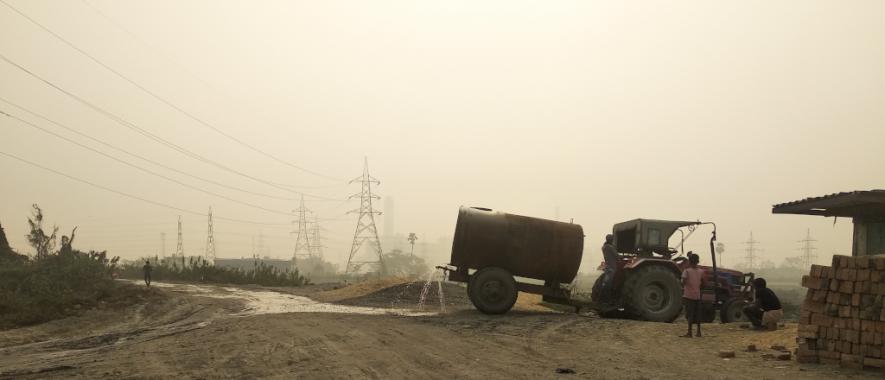
Water sprinkling on a fly ash ridden road
The entire region in close proximity to the thermal power plant is covered under a blanket of smoky dust and fly ash. In March, ‘westerly winds’ are on peak, making the place a choking chamber as dusty winds blow across the village compelling villagers to stay indoors. In normal days, too, mobility gets restricted and often water sprinklers are deployed to minimise the dust impact.
Arjun Baitha, who loads fly ash on a daily basis on tractors for transportation to other locations, told NewsClick that this was his single earning source and he had no option despite knowing the health risk involved.
Fly ash extraction agencies mostly engage local people at low wages and offer no protection, such as boots and hand gloves. Fly ash is mainly used for manufacturing bricks by private companies.
Besides air pollution, the power plant’s “callousness” has also led to crop damage in recent past. The continuous fly ash mixed in water spillage into agricultural fields has harmed the crop productivity season after season. Ramai Mahato (58), a small farmer, said last year the wreckage of the dam made for outflow of polluted waste water caused immense harm to crops in adjoining farm fields. Nearly 84 acres in 10 villages, including Madhuban, Sarmastpur, Narsandha, Pakri and Kothiyan, had to face the loss of paddy and vegetables.
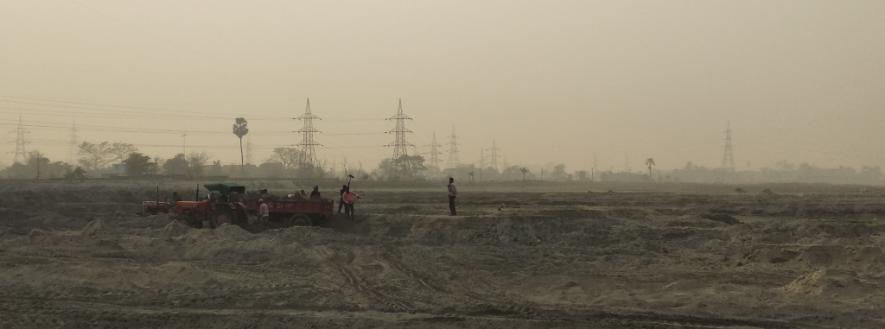
Locals engaged in fly ash loading
Pollution Mismanagement
Air pollution is the most severe threat being posed by the industrial setup that remains untouched by the thermal power plant management. Satnarayan Sahni, a local resident, filed a complaint with the National Green Tribunal (NGT) against the rising and unchecked pollution threat. Irked with the power plant authorities, the NGT directed the Bihar State Pollution Control Board (BSPCB) to take firm action.
In an inspection undertaken by BSPCB, the plant was found devoid of the following:
-
No maintenance of fly ash ponds, fly ash slurry dumped outside ponds, no separate drain for industrial waste, etc.
-
The minutes of the meeting asked the management to a separate storm water and industrial waste drain, sewage treatment plant and ash pond till the deadline of December 31 2020.
The storage of fly ash from the Kanti Thermal Power Plant became a bone of contention between rural inhabitants and government. In 2011, the proposal to construct 400-acre fly ash storage in Motipur block of the district led to outrage among local residents, who feared a threat to the environment and agricultural productivity.
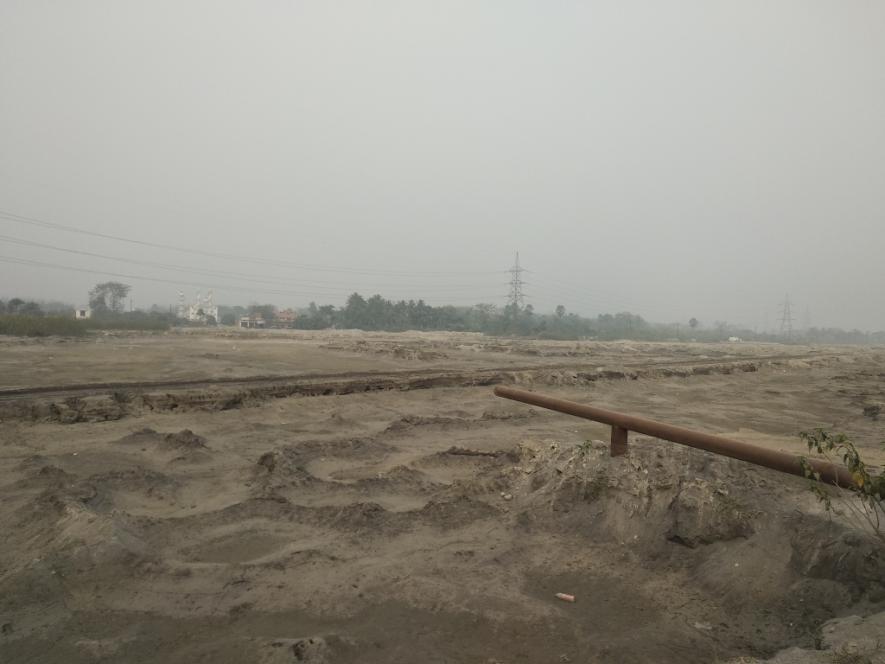
Village facing Fly Ash emitting pipe.
There are five large headed underground pipes that run across the National Highway and come over ground roughly a kilometer away from Kothiyan village where fly ash gets dumped in the open air, without any maintenance.
Bihar’s love for fly ash can be traced to a survey report submitted to the state government last year that disclosed that fly ash brick units had seen exponential growth since 2012.
Patna, Muzaffarpur, Begusarai and Bhagalpur were identified as the four major fly ash brick producing places. A majority of fly ash brick units in the state are situated in regions surrounded by thermal power plants.
The pollution issues in Kothiyan village and in Muzaffarpur city are similar but unchecked by the state government. Muzaffarpur city in the past had the worst levels of air quality and parallel rise of fly ash-related industry is not a mere coincidence.
Over the past two decades, the perception of fly ash has completely changed from being a ‘hazardous waste’ to a ‘resourceful material’, an official of Kanti Thermal Plant said on the condition of anonymity. This is primarily the industrial perspective. Socially, there have been complaints of fly ash harming crops and as well as raising the pollution levels since the inception of the thermal plant. Overall, the onus of managing fly ash lies with thermal plant management.
(The writer is freelance journalist based in Bihar.)
Get the latest reports & analysis with people's perspective on Protests, movements & deep analytical videos, discussions of the current affairs in your Telegram app. Subscribe to NewsClick's Telegram channel & get Real-Time updates on stories, as they get published on our website.












